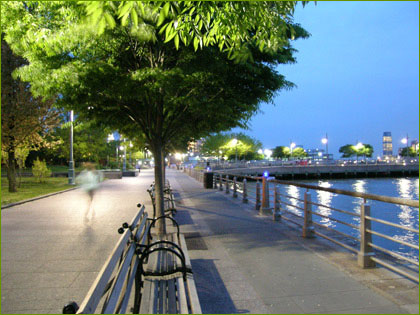BY PAUL A. ULLMAN | This week the governor signed the amended Hudson River Park Act. This piece of highly negotiated legislation was born out of the twin needs to address the park’s well-documented financial difficulties and to better manage its future care and growth.
New and longtime Downtown residents like myself should embrace this legislation as an important opportunity to protect the park we love while giving the community a voice, and revenue participation, in the inevitable future development that will take place throughout our neighborhoods.
The new legislation does much more than potentially convey future air rights. For example, it allows the Hudson River Park Trust to develop Pier 76 under strict guidelines that mandate 50 percent of the pier’s footprint be used for parkland and 50 percent for restricted commercial use. Because new revenue from the pier will be directed to Hudson River Park, the city will be under more pressure to finally remove their ridiculous tow pound.
As an observer and participant in the often-acrimonious conversations about how to fund the park in general and Pier 40 in particular, I can say that the revenue that can conceivably be raised through the mechanisms included in the amended Park Act may be our last, best chance to avoid financial crisis. To those who might welcome such a crisis as a way to force the city and state to come to the park’s rescue I say: Make that bet with someone else’s park — not mine. I remember what Central Park was like in the 1980s.
This legislation was born out of extensive, exhaustive and comprehensive discussions hosted by the Trust that included every conceivable slice of the park’s various constituencies. And, yes, air rights were discussed, as were many other potential revenue sources. No legislation can possibly satisfy every constituency, but this amendment gives the park a fair-minded and potentially innovative path to deal with our park’s funding, which, I am sure everyone would agree, is a very complicated urban policy puzzle.
For the potential air rights transfer, the legislation grants the community a role in determining if the benefits of developing inland make sense when balanced against the income opportunity. That possible income would go directly to the development and maintenance of the park.
With that money, we can finish the 30 percent of the park that is still incomplete, and we can also shore up Pier 40 and ensure it remains predominately a destination for youth and adult athletic leagues.
The question is whether our community will embrace this moment. “No way” has become a common mantra in the face of anything that might involve new development, or indeed change. Those of us in the Village know that the “just say no” approach hasn’t served us very well to date — St. Vincent’s and N.Y.U. are prime examples. Instead, we should take our new seat at the table and help give our neighbors the streetscape and the landscape they deserve and that the legislation intends.
Ullman is a board member, Hudson River Park Trust, a Greenwich Village resident and a park user


















